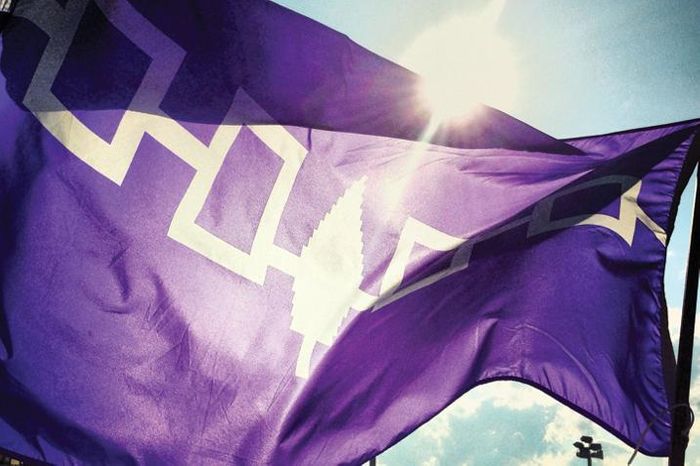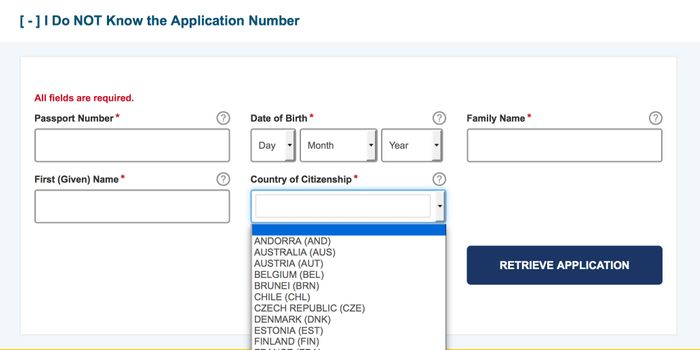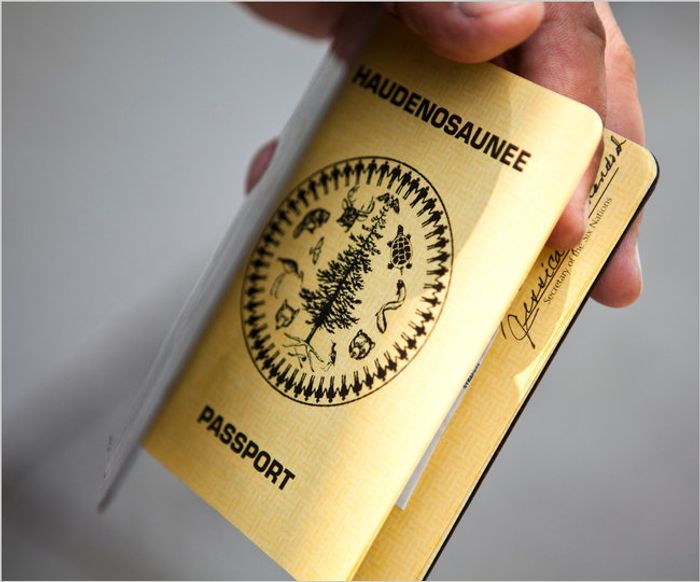I was reading a story today on the Guardian’s Comment Is Free website and fell into an internet rabbit hole. I’ve always understood that Native Americans who live within U.S. borders enjoy a certain sovereign status similar to that of a nation state. Declaring yourself as an independent state is pretty straightforward, the more complex part is proving your legitimacy at actual border crossings.
I got curious about this seemingly basic question: who is allowed to cross U.S. borders, and how does one qualify?
Back to Sid Hill’s article in the Guardian:
I’m a citizen of the six nation Haudenosaunee, commonly known as the Iroquois confederacy, one of the original peoples of what is called North and South America. We travel the world on our own passports, embracing the full rights extended by the rules of international law and diplomacy. Too often, our passports are denied by the very countries that took our land. They call them “fantasy documents”, but they are not.
The best-known incident happened in 2010, when Great Britain refused to allow the Iroquois Nationals lacrosse team to travel to the World Lacrosse Championships in Manchester on Haudenosaunee passports.
Back then, when the British asked the Americans if they would let us return after the tournament, the Americans were in a bind. Saying yes would officially recognize our passports. And it was absurd to say no, since this issue began when the Europeans arrived five centuries ago and seized our lands in the first place.
So the Americans said nothing, leading to a days-long standoff before then-secretary of state Hillary Clinton, a former New York senator, granted a one-time waiver. That was still not enough for the British, so we were barred from the championship of a game we invented and which is central to our culture.

I searched for other articles about the story and found this one published in July in Lacrosse Magazine:
Iroquois passports have been used since 1977, but not all countries will accept them as an acceptable form of identification. The passports do not currently meet requirements of the Western Hemisphere Travel Initiative, which went into effect in 2009 to strengthen U.S. border security. The issue of Iroquois sovereignty drew worldwide media attention in 2010, when the U.K. would not allow the Iroquois Nationals men’s lacrosse team into its borders without Canadian or American passports. The Iroquois withdrew from the FIL World Championship in Manchester, England, but returned to the event last summer in Denver to earn the bronze medal.
I’m curious about those unmet security requirements. Is this about the physical booklets not having notoriously insecure RFID chips? Or is this more generally about Haudenosaunee passports losing their legitimacy altogether?
The U.S. Customs and Border Control website notes that an “Indian/tribal card can NOT be used for air travel,” which leads to the question: can a passport simply lose its essential passport-ness and be downgraded to a mere “card?” (Also, the wording makes this sound like it’s narrowly about air travel, but I suspect they’re trying to distinguish “outward-facing” borders from those with indigenous land.)
Reading the Wikipedia article on the Western Hemisphere Travel Initiative it sounds like the U.S. expects a specific kind of paperwork—beyond the presentation of a passport—that indigenous groups are understandably reluctant to submit to. There are very specific requirements depending on which tribe you belong to.
Native Americans in the United States, Mexico, and Canada may be able to use certain additional forms of identification (in addition to the documents valid for citizens of those countries):
• Members of the Kickapoo Band of Texas and Tribe of Oklahoma will continue to be able to use the I-872 American Indian Card (provided that it identifies them as Kickapoo), regardless of U.S. or Mexican citizenship.
• Members of other U.S. tribes may use an “Enhanced Tribal Card”, when available and approved by DHS.
Back on the Border Control website, there’s an F.A.Q. for My Country of Issue is not in the ESTA drop down menu, other passport eligibility issues. ESTA stands for Electronic System for Travel Authorization and is described as:
an online application system developed by the United States government to pre-screen travelers before they are allow [sic] to board an airplane or ship bound for the United States. Starting on January 12, 2009, any person entering the United States under the visa waiver program is required to hold an approved ESTA Travel Authorization.
So the easiest way to apply, without a visa, hinges on whether you come from one of the 38 countries listed on the ESTA application form.

The visa option requires that you bring an application, in person, to one 226 U.S. consulates or embassies. I parsed the list and there are locations for 171 countries (and two with no country listed: Hong Kong and Jerusalem). That all makes sense for those who live in one of those countries wanting to get into the United States, but there is also the matter of traveling from a U.S. airport to another country.
From the NY Times article about the 2010 Iroquois Lacrosse stand-off:
The team turned a guest room at the Comfort Inn near Kennedy Airport into a diplomatic command center of sorts, and team officials made a last-ditch effort to get the visas, traveling to the British consulate in Manhattan on Friday to make a final plea. The team dined at the Cheesecake Factory at the Mall at the Source here while awaiting word on their status Friday night.
So what is the basis for the State Department’s reluctance to recognize Iroquois passports? Later in the article is what seems to be the answer: “The Iroquois passports are partly handwritten and lack the holograms and other technological features that guard against forgeries.”

It’s all about holograms! Holography is, apparently, an essential ingredient for competing in the World Lacrosse Championships. And are “other technological features” about those flawed-but-well-meaning RFID chips?
What strikes me about this whole story is that it sounds eminently solvable. Surely new passports with the required features could be designed and distributed. But it also seems unfair for the Iroquois to bear the cost and inconvenience involved.
So here’s a kind of ridiculous idea: if the Iroquois’ passports have been rendered obsolete, we might decide to simply treat them as cultural artifacts, as art objects even. Assuming we’re okay with that (extending a history of colonialist artifact hording), these objects could be sold at auction, or to art institutions, in order to fund the production of new more technologically featured passports.
Slovenian artists have already issued passports to audiences at MoMA. Why not put our all-consuming art market to a more practical use than simply parking unstable capital. I also wonder how hard it is to add those required holograms and “other features?” Yes, it’s a ridiculous idea, but I decided to type it out here anyway.